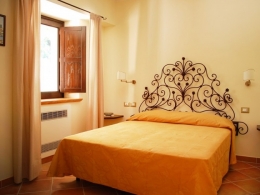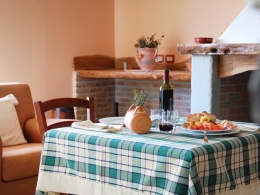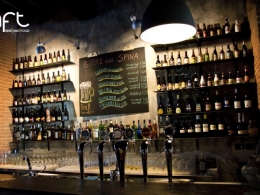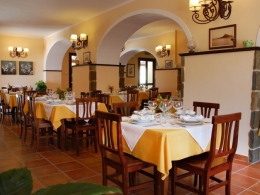Santuario della Madonna del Monte Gelbison
 Sito web: nd
Sito web: ndOur Lady of Mount Gelbison Shrine
The Shrine "Madonna di Novi Velia", is placed on top of Mount Gelbison (in depth), at 1705 m above the sea level. It is the highest shrine in Italy and about its origins, dating back to 1323, there is a legend: every time the works for the shrine’s building stopped for a few days, at the resumption workers found everything destroyed. Until one night when, to some workers that went on the mountain to search for a lost lamb, the Virgin appeared and said She desired them to dedicate the chapel to Angels.
Every year in summer pilgrims go in procession to the shrine, carrying a baby Jesus made of wax. They come from all over southern Italy.
The Marian shrine, and in particular the monastery, impresses for its size and for the location: right at the highest point of Mount Gelbison. From there you can see almost all the Cilento area, with the Alburni Mountains on one side and the blue of the Tyrrhenian Sea on the other side and, farther south, even the massif of Pollino. Beyond the Amalfi coast, you can see Ischia and Capri.
It is an extraordinary panoramic point. The large forests that cover the slopes are home to rare and precious animals like wolf, marten and black peak.
The pilgrimage
For Cilento’s people Mount Gelbison is simply “the Sacred Mountain” which annually attracts thousands of faithful, not only from Campania but also from Basilicata, Puglia and Calabria. "Madonna del Monte", as it is called in Cilento (whose worship dates back to 1300) is a wooden statue that depicts the Virgin sitting with the baby on her left arm and with the right hand in the gesture of distributing her divine favours.
Brown, elongated face, slender figure, the statue takes us back to the Byzantine iconography and the Basilian Italo-Greek monks colonization of the first Millennium of our era:
they fled from Byzantium and the Balkan Peninsula, after the invasions of the Eurasian Avars and the Slavs and the iconoclastic fights of 726. They took refuge in Southern Italy and found in Cilento (rugged and wild at that time, with its woods and the thousand caves and ravines) the perfect place for the isolation required for their coenobitic life.
The founders of the shrine, which was originally just a small temple, probably lived at first in natural caves or around the cave where they had placed the image of the Virgin. The legend related to the shrine’s building is told by the monk Bernardo Conti in his book Storia e miracoli della Beata Vergine del Monte Sacro di Novi( History and miracles of the Blessed Virgin of Monte Sacro di Novi).
Some shepherds from Novi Velia had decided to build a small temple dedicated to the Virgin, at the foot of the mountain, but all attempts were unsuccessful since every morning they found the previous day's work destroyed. They finally decided to stay awake at night to discover the authors. They brought with them a lamb with the intention to eat it but, on the verge of being killed, the lamb escaped and arrived on top of the mountain; then it stopped in front of a small cave. Inside there was the effigy of the Virgin. Astonished, the shepherds went to tell what happened to villagers and to the Bishop who soon arrived there to see with his own eyes; and when he was about to bless the cave a voice resounded from above: "this place is holy and it was consecrated by angels".
This legend, of course, is common to many shrines.
At each shrine is tied the pilgrimage as form of devotion. It could be a forest, a river, a rock, a tree, a sacred mountain or a thaumaturge deity.
Maria Santissima del Sacro Monte is the Virgin of Cilento.
The first document that mentions a "rupis Sanctae Mariae" in the fief of Rofrano (the other side of Mount) dates back to 1131 and lies in a Diploma given by Ruggero II the Norman to the Abbot Leonzio of S. Maria Grottaferrata.
Vallo della Lucania - Angellara
30' to the seaside
From € 48,00
B&B / a pers.





















